Welcome to the majestic River Tweed, a jewel in the crown of Scottish salmon fishing. Renowned for its pristine waters and abundant Atlantic salmon, the River Tweed beckons anglers from around the world with the promise of both challenge and reward. Flowing through the scenic borders of Scotland and England, this river is not only steeped in history but also boasts some of the most productive salmon fishing spots in Europe.
In this blog post, we’ll explore the ultimate five spots along the River Tweed that are famed for their exceptional salmon runs. Each location offers a unique fishing experience, shaped by the river’s diverse landscapes and water conditions. Whether you’re a seasoned angler or a curious novice, these spots provide thrilling opportunities to cast your line in waters where the legends of salmon fishing come to life. Get ready to discover where and how to land your next big catch on one of Scotland’s most storied rivers.
River Tweed Salmon Fishing
The Junction Pool: A Premier Salmon Fishing Destination
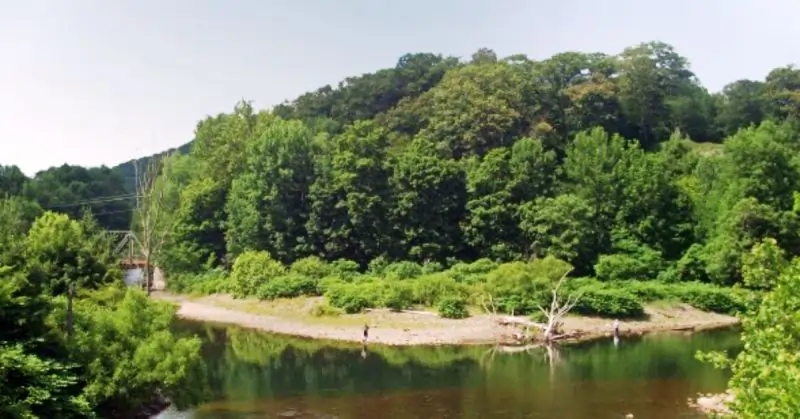
Location and Historical Significance
Nestled at the confluence of the River Tweed and the Teviot River, the Junction Pool is not only a geographical marvel but also a site steeped in angling history. This renowned spot has been the centerpiece of Scottish salmon fishing lore for centuries. The merging waters from two of Scotland’s significant rivers create a natural gathering point for salmon, making it a legendary fishing destination that has attracted royalty, celebrities, and dedicated anglers from around the world. The historical significance of the Junction Pool is enhanced by its reputation as a witness to the evolution of fly fishing techniques and conservation efforts over the years.
Prime Spot for Salmon Fishing
The Junction Pool’s allure as a top fishing destination stems from several unique geographical features:
- Confluence of Waters: The meeting point of the River Tweed and Teviot River creates dynamic water flows and varying depths, providing ideal conditions for salmon. These waters are rich in oxygen and nutrients, attracting salmon as they prepare for their upstream journey.
- Depth Changes: The pool’s varying depths allow salmon to find refuge and rest, making them more accessible to anglers. The depth also contributes to a diverse habitat that supports a healthy salmon population throughout the fishing season.
Fishing Techniques and Best Times
- Techniques:
- Fly Fishing: The most effective technique at the Junction Pool is fly fishing, particularly using double-handed rods which allow for longer and more controlled casts to cover the extensive area where the rivers meet.
- Spey Casting: Ideal for the wide and often windy conditions at the Junction Pool, Spey casting is an effective way to present flies across the broad currents.
- Best Times:
- Early Season: During the spring months, when the water levels are higher, using sinking lines can help get the flies down to the deeper parts where the salmon are often found.
- Summer and Autumn: As the water warms and levels drop, switch to floating lines with smaller flies. During these months, early morning or late evening provides the best conditions as the lower light levels make salmon less wary and more likely to strike.
Lower Pavilion: A Serene Retreat for Salmon Anglers
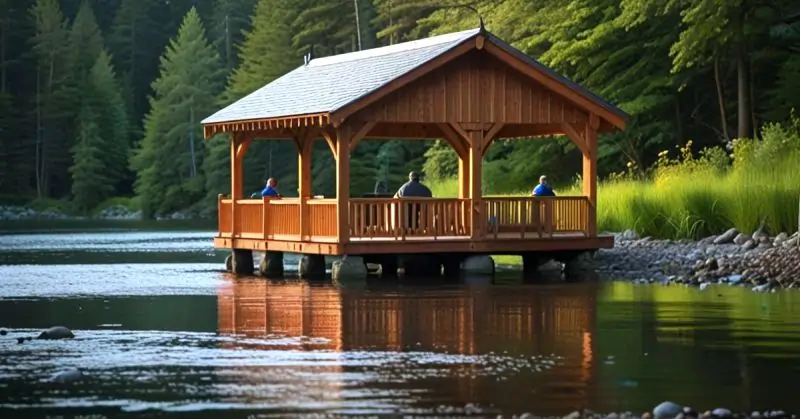
Overview of Lower Pavilion
Situated near the picturesque town of Melrose, Lower Pavilion is a cherished segment of the River Tweed known for its tranquil beauty and less crowded fishing environment. This spot offers anglers a more secluded and peaceful fishing experience, away from the more frequented beats upstream. With its gently flowing waters bordered by lush, tree-lined banks, Lower Pavilion provides not only a rich habitat for salmon but also a serene setting that epitomizes the pastoral beauty of the Scottish Borders.
Salmon Runs and Optimal Seasons
Lower Pavilion is celebrated for its consistent salmon runs, which sustain a vibrant fishing season:
- Type of Salmon Runs:
- Spring Run: Known for its early run of Atlantic salmon, Lower Pavilion sees these majestic fish beginning their journey upstream as early as February, continuing through May. These salmon are typically larger and more vigorous, offering a challenging catch.
- Autumn Run: Starting in September and peaking in October, the autumn run features a mix of mature salmon returning to spawn. This run often includes a higher volume of fish, making it a favored time for many anglers.
- Best Seasons to Visit:
- The optimal times for visiting Lower Pavilion are during the spring and late autumn. Spring offers the thrill of catching the early runners, while autumn provides higher catch rates due to the increased salmon activity as they prepare for spawning.
Gear and Tactics for Success at Lower Pavilion
- Recommended Gear:
- Rods: A 13 to 15-foot double-handed fly rod is ideal for handling the varying currents and enabling long, smooth casts.
- Lines: Depending on the season, use a medium sink line in spring to reach the deeper channels where salmon hold in colder water, and a floating line in autumn when fish are closer to the surface.
- Flies: In spring, larger and brighter flies can be effective due to murkier waters, while smaller and more subdued patterns work best in the clear waters of autumn.
- Fishing Tactics:
- Spot Selection: Focus on areas where currents slow down and create natural resting points for salmon, such as behind large rocks or where streams enter the river.
- Timing: Early mornings or late evenings are typically the most productive times, as salmon are less cautious and more likely to feed in low light conditions.
- Presentation: Ensure your fly is presented deep and swings slowly across the current in spring. In autumn, adjust your technique to allow the fly to skim closer to the surface to entice the more aggressive pre-spawn salmon.
Ladykirk: Premier Mid-River Fishing on the Tweed
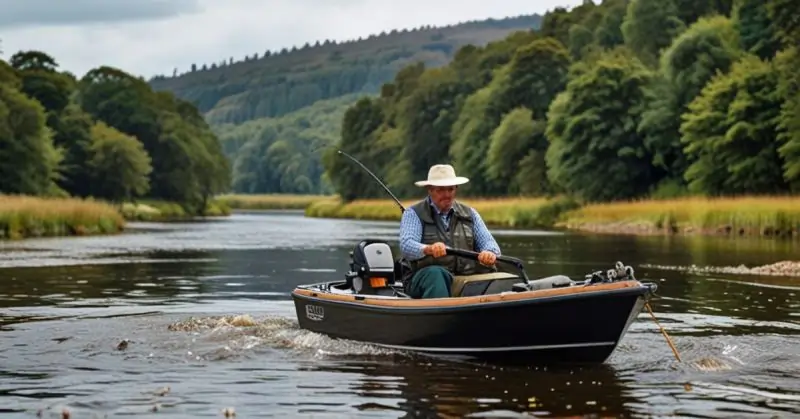
Characteristics of Ladykirk
Ladykirk, beautifully nestled along the middle reaches of the River Tweed, offers anglers a distinctive fishing environment characterized by its broad, gently meandering stretches of water. This mid-river location is favored for its scenic tranquility and the steady flow that creates ideal conditions for both fish and fishermen. The waters here are moderately deep with occasional faster runs, bordered by expansive, well-kept banks that provide ample room for casting.
Accessibility and Regulations
- Accessibility: Ladykirk is highly accessible thanks to well-maintained paths and clear signage, making it suitable for anglers of all ages and abilities. Parking facilities are conveniently located near the main fishing spots, ensuring easy access to the river.
- Permits: Fishing at Ladykirk requires a permit, which can be obtained from the local fishing associations or via several fishing tackle shops in nearby towns. These permits are available for purchase on a daily or weekly basis, catering to both local anglers and visitors.
- Special Regulations: The area is governed by the River Tweed’s conservation rules, which include mandatory catch and release for certain species and periods during the fishing season. Anglers are advised to familiarize themselves with the latest regulations before their visit to ensure compliance and to support sustainable fishing practices.
Unique Features of the Landscape and Water Flow
Ladykirk’s landscape is marked by its undulating hills and the lush vegetation that lines the riverbanks, providing not only a picturesque backdrop but also natural cover for wildlife. The river here flows over a mixture of gravel and sand beds, which are ideal for salmon and sea trout, especially during their spawning migrations.
The water flow at Ladykirk is moderated by several small islets and subtle bends in the river, which create diverse aquatic environments. These features slow the water flow in places, creating deep pools and soft eddies that are perfect for salmon to hold and rest. Additionally, during periods of low rainfall, these natural structures help maintain sufficient water depth, ensuring the river remains a favorable habitat for fish throughout the season.
Fishing Highlights and Tips
- Prime Locations: Focus on fishing around the bends of the river and near the islets where water flow slows and fish are likely to gather.
- Optimal Techniques: Fly fishing is particularly effective at Ladykirk due to the wide, open stretches of water. Anglers should consider using Spey casting techniques to effectively cover the large pools and runs.
- Best Times to Visit: Early morning and late evening are typically the most productive times for fishing at Ladykirk, as the lower light levels reduce the fish’s wariness, increasing their activity.
Boleside: A Prime Fishing Destination Near Galashiels
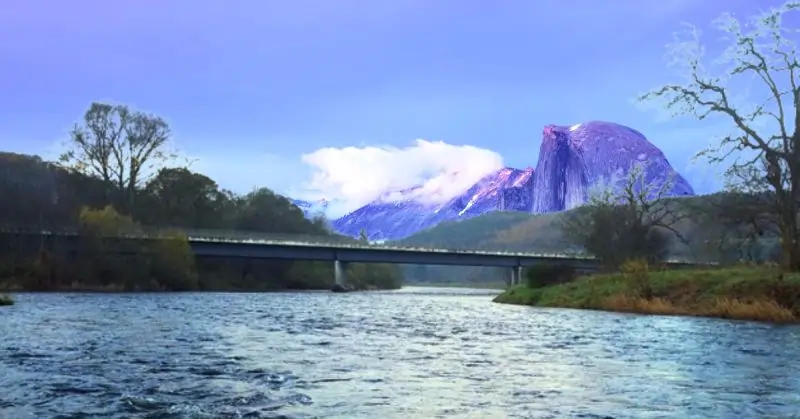
Overview and Proximity to Galashiels
Boleside, located just a short drive from the bustling town of Galashiels, stands out as one of the River Tweed’s most accessible and inviting fishing locations. Its close proximity to Galashiels offers anglers the unique advantage of nearby urban amenities while enjoying the serene, rural setting along one of Scotland’s most famous salmon rivers. This spot is particularly noted for its scenic views and the consistent quality of salmon and sea trout it attracts.
Community and Support Facilities
- Local Angling Community: Boleside benefits from a robust local angling community, with a well-established network of experienced anglers and guides. The community is active in organizing events, sharing fishing reports, and offering tips to newcomers, which fosters a welcoming and supportive environment.
- Facilities for Anglers: Near Boleside, anglers have access to a range of facilities designed to enhance their fishing experience. These include:
- Tackle Shops: Several well-stocked shops in nearby Galashiels provide fishing gear and local flies.
- Fishing Lodges and Accommodations: A variety of accommodations are available, ranging from cozy riverside cabins to more luxurious lodges, catering to different budgets and preferences.
- Guiding Services: Professional guiding services are readily available, offering both novice and experienced anglers the opportunity to learn new techniques or refine their skills.
Conservation Practices and Respect for Private Lands
- Conservation Efforts: Boleside is part of a broader conservation area along the River Tweed, which implements specific measures to ensure the sustainability of its fish populations. Anglers are encouraged to practice catch and release, particularly with salmon, to help maintain healthy fish stocks.
- Respecting Private Lands:
- Access Agreements: Most of the fishing spots around Boleside are on private land, where access is granted through agreements with landowners. It’s crucial for anglers to adhere to these agreements and follow the established paths to fishing locations.
- Leave No Trace: Anglers are expected to follow ‘Leave No Trace’ principles, which involve keeping the banks clean, disposing of all waste properly, and minimizing disturbance to the natural environment.
- Community Engagement: Engaging with the local community and participating in voluntary conservation activities can also enhance relationships between anglers and landowners, ensuring continued access to these cherished spots.
Horncliffe: The Dynamic Gateway to River Tweed Salmon Fishing
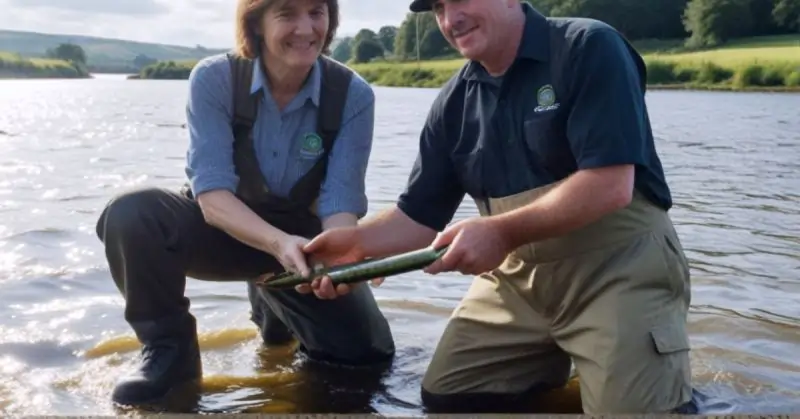
Description of the Fishing Environment
Horncliffe, situated at the lower reaches of the River Tweed near the border with England, offers a dynamic and exhilarating fishing environment. This location is characterized by its tidal influences, which create varying water conditions and challenges that are unique compared to the upper stretches of the river. As one of the last stops for salmon before entering the North Sea, Horncliffe presents a strategic advantage for anglers looking to catch salmon in their prime condition. The area features a mix of fast-moving flows and deeper pools, providing diverse habitats that are ideal for salmon and sea trout.
Challenges and Rewards of Fishing at Horncliffe
- Challenges:
- Tidal Variations: The most significant challenge at Horncliffe is the tidal nature of the river here. Water levels and flow rates can change dramatically over a few hours, which affects fish behavior and the effectiveness of certain fishing techniques.
- Navigating the Waters: For those unfamiliar with tidal river environments, navigating Horncliffe can be tricky. Strong currents and sudden changes in depth make it essential to understand the best positions and times for fishing.
- Rewards:
- High Fish Activity: Due to its proximity to the sea, Horncliffe sees vigorous salmon runs, especially during the autumn season. The challenge of the tides often brings out the best in these fish, making for an exciting fishing experience.
- Diverse Techniques: The changing conditions allow anglers to experiment with a variety of fishing techniques, from fly fishing during lower tides to spinning during higher water levels, each offering its own thrill and potential for rewarding catches.
Recommendations for First-Time Visitors
- Understand the Tides: Before visiting, check the tidal charts for Horncliffe and plan your trip around the tides. Fishing during incoming or outgoing tides can be particularly productive as the moving waters stimulate salmon activity.
- Gear Up Appropriately: Equip yourself with versatile gear that can handle both strong currents and quieter waters. A good selection of flies and lures that can adapt to different depths and water conditions is crucial.
- Local Knowledge: Consider hiring a local guide for your first visit. Their expertise in handling the river’s tidal nuances can be invaluable, not only to improve your catch rate but also to ensure safety amidst changing conditions.
- Safety First: Always wear a life jacket when fishing in tidal areas and be cautious of slippery riverbanks and strong currents. The river environment can change quickly, so being prepared and cautious is essential.
Essential Gear for Salmon Fishing on the River Tweed
Choosing the Right Rods, Reels, and Flies
The River Tweed, with its diverse environments and salmon opportunities, demands high-quality, versatile gear to meet the challenges of both large and agile fish.
- Rods: For the varied conditions of the River Tweed, a 12 to 15-foot double-handed spey rod is ideal. These rods allow for long, effortless casts and are particularly effective in managing the river’s wider sections and dealing with its powerful currents. For those who prefer single-handed rods, a 9 to 11-foot rod with a fast action can provide good control for smaller flies and precision casting in tighter spots.
- Reels: A robust reel with a smooth and reliable drag system is crucial. Look for large arbor reels which provide quicker line retrieval and less line memory. Make sure the reel is capable of holding enough backing to handle the long runs that salmon are known for.
- Flies: The choice of flies can vary depending on the season and water conditions:
- Spring: Larger and brighter flies such as the Tweed Shrimp, Silver Stoats, and tube flies can be effective as the water is often higher and murkier.
- Summer: Smaller flies like the Stoats Tail, Garry Dog, and Durham Ranger work well in lower, clearer waters.
- Autumn: As salmon prepare to spawn, patterns such as the Ally’s Shrimp, Junction Shrimp, and various other shrimp and prawn imitations can be particularly tempting to the fish.
Importance of Waterproof Gear and Personal Safety Equipment
Equally important as the fishing tackle is the gear that keeps you safe and comfortable during your fishing excursions.
- Waterproof Gear:
- Waders: Breathable chest waders are essential for both comfort and mobility. Look for waders with reinforced knees and boots with good ankle support and grip, especially if you’re wading on slippery substrates.
- Jackets: A good quality waterproof fishing jacket not only keeps you dry but also comes with multiple pockets for storing essential gear like flies, leaders, and other small tools.
- Personal Safety Equipment:
- Life Jacket: Always wear a life jacket or a personal flotation device (PFD) when fishing, especially in fast-moving or deep water.
- Wading Staff: A sturdy wading staff can help maintain balance in uneven or fast-flowing waters, crucial for avoiding falls and injuries.
- First Aid Kit: Carry a basic first aid kit for handling minor injuries such as cuts, hooks injuries, or sprains. Include waterproof matches, a whistle, and a thermal blanket in case of emergency.
- Eye Protection: Polarized sunglasses not only protect your eyes from hooks and UV rays but also enhance visibility in the water, helping you spot fish and underwater structures.
Conservation and Etiquette on the River Tweed
Conservation Rules on the River Tweed
The River Tweed is governed by a comprehensive set of conservation rules designed to sustain its ecosystem and ensure the future of its salmon and sea trout populations. These rules are critical not only for maintaining healthy fish stocks but also for protecting the river’s natural environment.
- Catch and Release: A significant portion of the conservation efforts involves mandatory catch and release rules during certain times of the year, particularly for salmon. This practice helps maintain population levels and supports the health of breeding stocks.
- Seasonal Restrictions: Fishing on the River Tweed is strictly regulated according to the season. These regulations ensure that fishing does not interfere with the spawning periods of salmon and trout, which is crucial for their life cycle and future populations.
- Tackle Restrictions: The use of certain types of hooks and baits may be restricted during different parts of the fishing season. For example, barbless hooks are often required to minimize injury to fish, making catch and release less harmful.
- Conservation Licenses: Anglers are required to possess valid fishing licenses, which include conditions that support conservation efforts. Funds from these licenses typically go towards river management and conservation projects.
Importance of Fishing Etiquette
Maintaining proper fishing etiquette is essential not only for the sustainability of fish populations but also for fostering a respectful and cooperative environment among anglers and local communities.
- Respect for Local Communities: Many areas along the River Tweed are adjacent to private lands and small communities. Anglers are expected to respect property rights, adhere to access points, and avoid causing disruptions. Engaging with local communities positively can also support local businesses and strengthen relationships.
- Interaction with Other Anglers: Given the popularity of the River Tweed, it is common to share fishing spots with other anglers. Proper etiquette includes giving other anglers enough space, communicating openly about intended fishing spots, and sharing the water amicably.
- Environmental Responsibility: Anglers should ensure they leave no trace of their visit. This includes taking all litter home, handling fish with care, and avoiding damage to riverbank vegetation. The preservation of the river’s natural beauty and cleanliness contributes significantly to wildlife health and the overall angling experience.
- Educational Outreach: Experienced anglers can play a vital role in educating newer visitors about the river’s conservation rules and best practices. Sharing knowledge about sustainable fishing techniques and conservation laws enhances overall compliance and protects the river’s ecosystem.
FAQ on “River Tweed Salmon Fishing”
Q: What is the best time of year to fish for salmon on the River Tweed?
A: The best times are during the spring and autumn salmon runs.
Q: Do I need a permit to fish for salmon on the River Tweed?
A: Yes, a valid fishing permit is required to fish on the River Tweed.
Q: Are there catch and release rules for salmon fishing on the River Tweed?
A: Yes, there are mandatory catch and release regulations during certain times of the year to protect salmon stocks.
Q: Can beginners fish for salmon on the River Tweed?
A: Absolutely, the River Tweed offers spots suitable for anglers of all skill levels
Conclusion
We’ve explored five exceptional salmon fishing spots along the River Tweed, each offering a unique experience for anglers. From the dynamic currents at Junction Pool to the peaceful waters near Boleside and the tidal challenges at Horncliffe, these locations cater to both beginners and experienced fishers. Ladykirk and Lower Pavilion add tranquil settings with rich salmon runs to our journey. As you prepare to visit these prime fishing spots, remember the importance of following local fishing regulations and preserving the natural beauty of the River Tweed. By respecting these practices, you help sustain the river’s salmon population for future generations to enjoy. Happy fishing, and let your respect for nature enrich your experience on the River Tweed!
You may love to read our amazing post on : Best Fishing Spots Fort Worth: The Ultimate Guide of 2024
